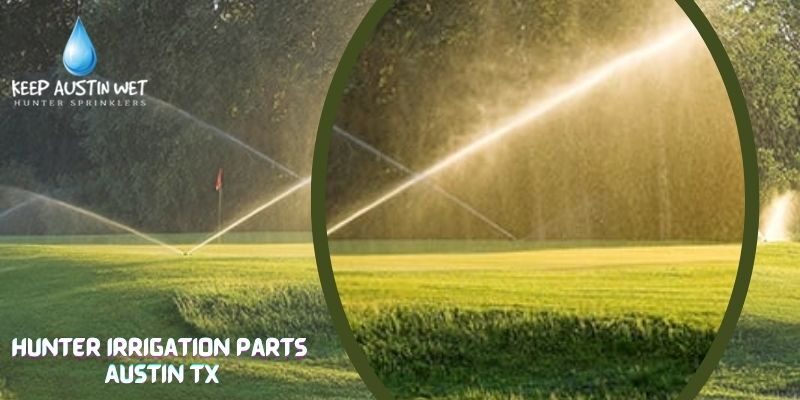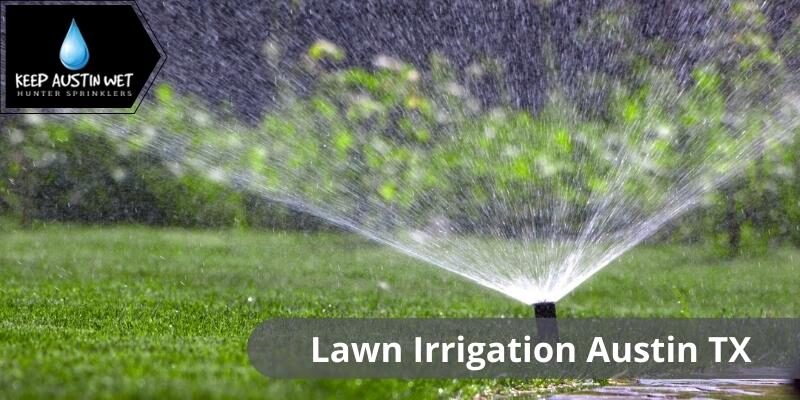Corrosion is an expensive issue for sprinkler systems. It can create leaks, resulting in faulty sprinkler systems, water damage, & finally, the replacement of the complete system. This blog from Hunter Irrigation Parts Austin TX, examines corrosion, where it may be found, how it impacts a sprinkler system, & how to detect and avoid it.
What is corrosion?
When we talk about corrosion, we generally mean when a metal interacts with its surroundings, causing the metal to deteriorate. In sprinkler systems, this frequently occurs when oxygen combines with iron to generate iron oxides, sometimes known as “rust.” This is increased further when it happens in the presence of liquid, which aids the reaction.
While this is the most prevalent, other forms of corrosion, like microbiologically influenced corrosion (MIC) & galvanic corrosion, can also impact a sprinkler system.
There is both exterior and interior corrosion in any metallic element of a sprinkler system. While each of these faults is capable of causing system failure, interior corrosion is harder to detect and creates more problems. Internal corrosion often originates at the air/water contact, whereas exterior corrosion is more environment-dependent.
Where does corrosion occur?
There are several places where pipework and sprinklers are particularly vulnerable to external corrosion. The majority of these places have various components in the environment that might accelerate corrosion. Among the most popular Hunter irrigation parts Austin TX, examples are:
- Areas with manure or fertilizer (animal pens)
- Areas or Pools containing pool chemicals
- Areas close to the ocean which are exposed to salt air from the outside
- Salt storage
- The pipe is in touch with the dirt.
- Excessive moisture areas (steam room)
In areas where corrosive circumstances are known, corrosion-resistant sprinklers & corrosion-resistant pipes, fittings, and hangars must be installed. Meanwhile, all pipes & fittings put on the building’s outside must be corrosion resistant.
Internal corrosion, on the other hand, is most frequent where metal, water, and air come into contact. This can happen in both dry & wet pipe systems. Corrosion happens most frequently in moist pipe systems near pockets of air that might become trapped in high places.
Corrosion happens most frequently at low locations in dry &preaction systems because it is where any leftover water accumulates. Hunter irrigation parts Austin TX, can undoubtedly provide you with the best service and can help you avoid corrosion.
What effect does corrosion have on a sprinkler system?
Sprinkler systems suffer from corrosion, which causes the components to fail. For pipes, this might manifest as pinhole leaks or rust accumulation that restricts water flow. Corrosion in sprinklers can block the water discharge orifice, interfere with the deflector & discharge pattern, or seal the plug, prohibiting water from touching the fire.
Other components, such as pipe hangers & fittings, might also corrode, leading to further issues.
What can I do to minimize corrosion?
It is practically difficult to eliminate the chance of corrosion. However, there are several procedures suggested by hunter irrigation parts Austin TX that may be followed to assist limit the amount of corrosion in a system:
- Better pipe material: Looking just at the material utilized is an excellent place to start when attempting to postpone corrosion. Certain types of pipe, like plastic CPVC, copper, or galvanized steel, are more corrosion resistant. There are other advantages to having thicker pipes since rust does not eat through the pipe wall as rapidly. Higher quality materials may be more expensive up front, but they will last longer and be more reliable.
- Corrosion-resistant sprinkler: Sprinklers installed by hunter irrigation parts Austin TX, in locations prone to external corrosion, must be corrosion resistant. This implies they must be made of corrosion-resistant material, coated with a specific coating like wax, as well as plated with a corrosion-resistant metal.
- Water supply: According to NFPA 13, Standard for the Installation of Sprinkler Systems, the water supply must be assessed to see whether it has any unique corrosive qualities or is likely to contain MIC. If it occurs, you must either construct a corrosion/MIC resistant pipe, treat the liquid with water additives, adopt a monitoring strategy, or fill your dry and preaction system with nitrogen.
- Wet Pipe: Air Venting: According to NFPA 13, a vent must be situated at a higher point within the system to enable air to be withdrawn by a manual or automated valve. This is a suitable strategy for reducing corrosion activity in wet pipe sprinkler systems. The air venting valve aims to evacuate as much trapped air as feasible from a single spot each time the system is filled, resulting in less oxygen for metal to react with.
- Dry Pipe: Drain Water Out of System: In the same way as wet pipe systems aim to remove air from the pipes, dry pipe and preaction systems want to remove water. Dry pipe &preaction systems must be pitched to something like a low point drain for water to be evacuated from the system. Because most corrosion occurs just at air/water contact, this will aid in corrosion prevention.
- Dry Pipe: Nitrogen: Nitrogen, rather than air, can be utilized to fill the sprayer piping network in the dry pipe as well as preaction systems. When a system is flooded with nitrogen, very little oxygen is present, which is essential in the rusting process. Nitrogen can be supplied via cylinders or by a nitrogen generator.
How can I spot corrosion?
Some rust is obvious, while others might be difficult to detect. Keep a watch out for external corrosion, which may be detected by its orange-brown color and rough texture during your yearly floor level check of pipes, fittings, and sprinklers.
Internal corrosion is much more difficult to detect during an annual inspection. Hence an assessment of piping’s internal state is necessary every five years. Aside from that evaluation, the consequences of internal and exterior corrosion may be detected by examining for water stains or leaky pipes where corrosion may have generated pinhole leaks in the system by eating down the wall of your pipes.
Conclusion:
When considerable corrosion accumulation affects sprinkler system operation, that segment of piping or sprinkler must be replaced. When corrosion is severe enough, a whole system must be replaced. Addressing these concerns can assist in ensuring the reliability of the sprinkler system, enhance the life of your system, and save you time, energy, & money in the long run.
Hunter irrigation parts Austin TX, provides a tailored solution that includes installation, repair, and maintenance. We are among the leading Hunter sprinkler dealers, providing affordable and dependable solutions to residential and commercial premises. For further information, please contact us at 512-690-3113 or aubreyhunter@aol.com.


